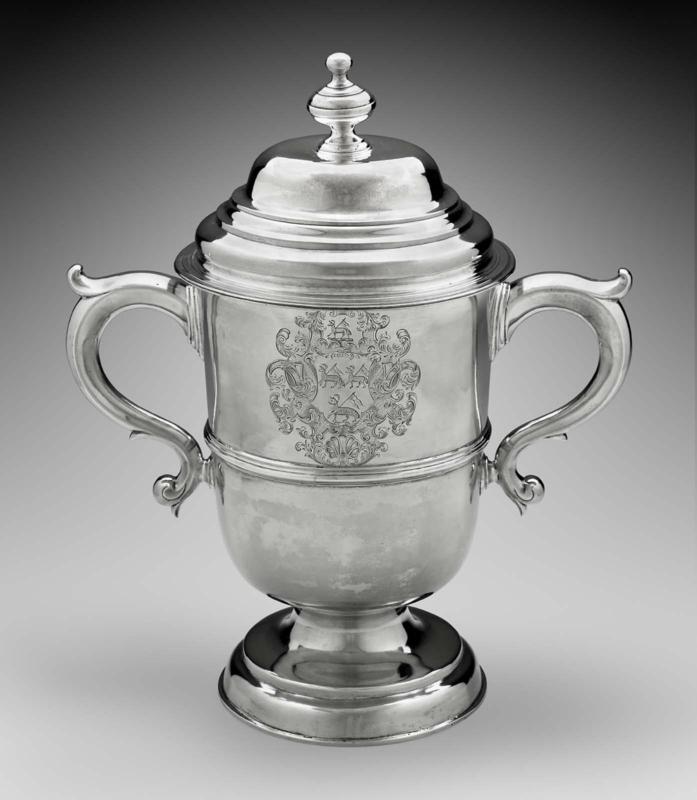Two-handled covered cup
Jacob Hurd
(American, 1702 or 1703–1758)
About 1740–50
Object PlaceBoston, Massachusetts
Medium/TechniqueSilver
DimensionsOverall: 34.3 x 30.5 x 21 cm (13 1/2 x 12 x 8 1/4 in.)
Credit LineHelen and Alice Colburn Fund
Accession number36.415
On View
On viewClassificationsSilver hollowware
Collections
Hurd's monumental, two-handled cups are among the masterpieces of Boston Baroque silver. This one was made for John Rowe and is beautifully engraved with his coat of arms. Graceful in stance and majestic in bearing, the cup presents a perfectly balanced composition of smooth surfaces and flowing handles and moldings. Although it is not known how Rowe acquired this cup, Bostonians often gave Hurd's cups as presentation pieces to reward sea captains and military heroes. At least one was used to hold Bishop, a sweet drink made of wine, oranges or lemons, and sugar mixed with mulled and spiced port. Bishop was drunk as the cup was passed from hand to hand.
This monumental two-handled covered cup is the epitome of American late Baroque silver. Jacob Hurd, Boston's premier silversmith of the mid-eighteenth century, combined complex moldings and wide, scrolled handles to create a balanced yet bold architectural composition. This cup was not only meant for drinking; it was meant to impress.Majestic two-handled cups (also known as grace cups) were particularly popular in Boston, and Hurd alone is known to have made at least four surviving examples. Such cups were often given as a presentation gift or commemorative award and were regularly used as communal drinking vessels for large groups in taverns or private gatherings at home. The pair of handles allowed the vessel to be easily passed from one person to the next. Many two-handled cups bear an engraved inscription honoring a person or recording an event; this example bears the coat of arms of the Rowe family of Boston. John Rowe, the cup's first owner, was a merchant who also actively participated in Massachusetts politics and social life. This text was adapted from Ward, et al., MFA Highlights: American Decorative Arts & Sculpture (Boston, 2006) available at www.mfashop.com/mfa-publications.html.
ProvenanceJohn Rowe (b. Exeter, England, November 27, 1715; emigrated 1735; d. 1787); m. Hannah Speakman (1725-1805), 1743; his nephew, John Rowe; his granddaughter, Mrs. Caleb Loring Cunningham (nee Anne Rowe), from whom it was purchased by the MFA in October 1936 for $5,500.
mid-15th century
mid to late 19th century (before 1889)
mid to late 19th century (before 1889)
Early 19th century
late 18th century
early 18th century
late 15th century (?)
mid-14th–mid-15th century
second half of 14th–first third of 15th century
late 15th–early 16th century
mid-13th century
Late 19th century (before 1890)



